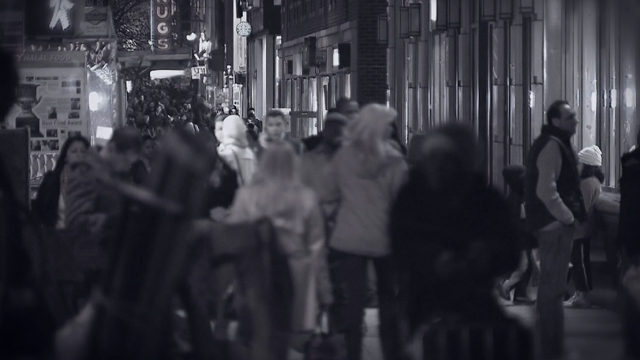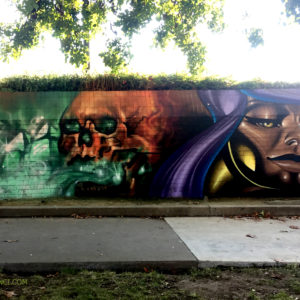THIS POST IS FOR MATURE AUDIENCES ONLY
CONTAINING HARSH AND SENSITIVE FACTS NOT APPROPRIATE FOR CHILDREN UNDER 18 YEARS OF AGE
There’s a crime being committed internationally that affects 200,000 children annually on American soil, and is more profitable than the drug trade (Guardian group). It is also the fastest growing underground industry in the world, and reaches every community in the United States. This is happening daily, right under our noses, without any awareness by the average citizen. Some would argue that our tax dollars are being spent wisely to address this situation, however; the facts point in the opposite direction. Over the decade between 2004 and 2014 proceeds from these heinous acts increased 500% to an outstanding 150 billion dollars (Guardian). What exactly is this epic issue we have been overlooking?
The definition of human trafficking is “the action or practice of illegally transporting people from one country or area to another, typically for the purposes of forced labour or commercial sexual exploitation” (Google). The problem touching our modern day communities is literally stone-age slavery. From children to mature adults, people are being kidnapped, abused, and brainwashed into manufacturing everyday products we purchase. People’s bodies are being sold for commercial sex and manual labor.
This topic is so unusual to discuss, I was previously unaware it was a local issue. It wasn’t until a peer pointed towards her volunteer work that I learned there are organizations everywhere aimed towards liberating these slaves. The demand for groups like Chico-based S.T.O.P. or ‘Stop Trafficking of Persons’ makes even more sense when you hear survivor Asia Graves in a CNN interview talk about a related police sting. She stated that a Superbowl event is likely to sell more humans than tickets. The accompanying law enforcement officer in the newsroom did not argue against this point (lead). For only $5, Graves said, you can purchase an ad on Backpage, a website where people buy and sell sex. Her awareness of this site comes from personal experience, having been purchased off of it as a child. The sex trade industry is generated by kidnapping women and girls, usually 14 to 22 years of age, mentally abusing them, physically raping them, threatening their families if they don’t comply, and sending them out into society to work (Lead). The commercial sex industry makes up 79% of human trafficking, and 80% of trafficked people are female while 50% of the victims are minors (S.T.O.P).
The sex slaves are placed in brothels and massage parlors, or are forced into pornography and street prostitution (Lead). The other 21% of trafficked people are used for agricultural work, cleaning services, construction, domestic servitude, restaurant work, factory manufacturing, and exotic dancing (Facts). All of these people are stripped of their dignity and paid little to nothing for their services. The problem of human slavery dives even deeper than trafficking, which only accounts for 2.4 of 12.3 million victims of forced labor, however; this industry rivals only the drug trade as one cohesive movement (S.T.O.P). In addition to sex, some of the products we purchase daily that could be impacted by this trade include cocoa, cotton, tobacco, coffee, rice, bricks, garments, carpets, footwear, gold, diamonds and coal (Facts).
A history professor from Chico State, Kate Transchel, has been doing research on the subject and interviewing survivors since 1998 (Testimonials). One trafficked girl gave a first-hand account from a brothel she was forced to work at. She said all the girls “had their teeth bashed out with a hammer by their traffickers” because it would be “better for oral sex”. While that took place outside of the United States, we are still connected. America is the number one destination for child trafficking with the average age range between 12 and 16 years old. The bulk of imported humans are women and children used for sex. Transchel quotes a trafficker serving time in Texas, who stated he prefers children in that age range “because it only takes about a week of gang rape and sodomy before their eyes go blank and they’re good to go… you know they’ll never run away” (Video) .
With accounts like this, it’s comforting to know people like Transchel are working towards resolving the issue, however, outside of volunteer organizations, what exactly is our government doing to help? Upon research, I discovered several non-profit websites listed to aid with this issue, and two pages of government facts. The Department of Homeland Security has a program called the “blue campaign” aimed at combating human trafficking, however it does not highlight women and children as the primary victims of this crime, or label the industry as an epidemic. It isn’t even clear what the program is actively doing to help victims. The DHS is obviously aware of the gravity of this issue when you read on their website
Human smugglers take thousands of dollars from truly desperate people—people overwhelmingly escaping a lack of economic opportunity and in some cases high rates of violence in their home country—and then send them on a course that rivals Dante’s journey to hell. Along the way, these desperate people are often beaten, raped, starved, and robbed of whatever possessions they’ve carried with them (DHS).
To some degree this is an encouraging acknowledgment, although it implies a foreign issue. Unfortunately, even less is being done to help than what these statements say, and the solid proof is in our budget. The U.S. government spent 18 million dollars in 2016 to combat human trafficking in America, which to an average citizen may sound like a lot of money (Services). That is, until it’s compared to the drug-war, which disproportionately cost tax payers $26 billion dollars the same year (drug policy). Why does the government care more about substance abuse than human-rights? One possible answer lies in human nature.
Professor Transchell stated that a girl who miraculously escaped to a nearby police station from a whorehouse in Moldova was returned to the brothel by the officer and that
as his reward, he was allowed to rape her “free of charge” for an entire week. The majority of police and government officials, in Eastern Europe, are not only helping the traffickers to get away with their crimes, but they are also clients. This is one of the main reasons why a lot of the police deny that sex trafficking even exists.
That story takes place outside the United States, but the general mentality behind prosecuting perpetrators stays the same on American soil. In 2004, The New York Times highlighted the importance of targeting Johns (buyers) in the sex industry to reduce the demand for these crimes in America. The article states that the general public doesn’t understand where commercial sex comes from. We don’t associate prostitution with slavery or sex trafficking, and aren’t aware that most sex workers were abducted as children, or the fact that women are frequently arrested for the services they are physically and emotionally forced into performing. This ignorance remains prevalent while the men who support slavery go ignored. Donna M. Hughes, an expert in human trafficking says
Polling suggests that about 15 percent of American men have bought sex, and back-of-envelope calculations suggest that a man has about a 1 in 100,000 chance of being arrested while doing so… I think there is still the old idea around that ‘bad woman’ lure men into bad behavior, and the police don’t want to bring shame on the whole family by arresting the man (Times).
Instead, they are blaming victims of abuse who are forced into this industry by a multitude of tactics, while the men who somewhat knowingly and willingly support this violence are dismissed. Shared Hope International states that “Society calls it prostitution, but federal law calls it sex trafficking… victims need help, not judgment or punishment” (SHI).
This misconception, and general sex-shaming (against women), may be part of the attitude contributing to the trafficking industry. Prostitution is commonly known to be the oldest business in the world, however; today in America, Nevada is the only state that allows a legal transaction of sex for money among two consenting adults. Permitting people to be human in a healthy regulated way, could aid sex workers in taking back their power and gaining the ability to control their own businesses. Things that normally take place in the shadows could be brought to light. Embracing the fact that the demand for commercial sex is not going to fade, and shining a light on the industry, would make it easier to separate workers from victims, combating human slavery while call girls ensure fair market prices and integrity in their industry.
“Proponents of legalizing prostitution believe it would reduce crime, improve public health, increase tax revenue, help people out of poverty, get prostitutes off the streets, and allow consenting adults to make their own choices. They contend that prostitution is a victimless crime, especially in the 11 Nevada counties where it remains legal.” (Prostitution). Decriminalizing consent and fair compensation, while raising awareness of abuse and rape, would be significantly more constructive for society than the system that arrests slaves trapped in the horrific trafficking industry. Johns could still continue to go unnoticed and un-shamed while the women who serve them are paid and have control of their bodies and finances. Work that adults and children are beaten and raped into submission to meet the demand for, could instead be regulated, protected, and fairly compensated.
Despite our national misconceptions about the sex industry, America’s government has more resources invested to end this slavery than any other country in the world right now, not including private donors (review). Out of 65 million dollars allocated globally to this cause in 2011, the United States funded 51 million (review). Additionally, according to the Office of Administration on Children and Families, there are 48 government organizations aimed at combatting human trafficking (OTIP). Between these two statistics, it’s understandable why people would feel this situation is under control, and why America is praised for our leadership in this crusade. Unfortunately, those funds don’t even begin to compare to the multi-billion dollar budget (derived from the same source) designated towards the drug war, and somehow nearly 50 government agencies, fighting for human rights, are barely making an impact.
Facees, another non-profit organization focused on ending human trafficking, says that even with all our government’s apparent efforts to liberate these people, the recovery rate for child survivors is “less than 1% of the actual trafficked population” They also state that “The Department of Justice has confirmed that care facilities specifically designed to support these trafficked children can give shelter to less than 100 of them” (Facees). The alternative placement to safe spaces ends up being juvenile hall, giving the promise of being “saved” a very different meaning. When observing the facts on a global scale, it appears our country is responsible for setting a world-wide standard for bringing a halt to the slave trade industry. Unfortunately, the standard we are setting is tragically low.
Some feel it’s mismanagement of funds, and a lack of transparency. There is apparently no disclosure into the way millions of dollars, donated to this cause, are being used (Review). Others feel it is the ignorance around products we support that unknowingly fuel slave labor practices. Most of the items we purchase have some tie to a corporation that uses less-than-ethical-labor to make our products cheaper. There’s very little awareness of this issue, let alone legal repercussions for violating companies. Sexism definitely comes into play, and this is apparent since slaves are treated like paid prostitutes, while Johns are protected from embarrassment in front of their families. With all of these factors currently playing a role in modern day slavery, what can be done to end human trafficking? One thing is certain. Our efforts so far are not enough.
This problem can be combated from several different angles, and it begins with a prevention strategy (Global). Aiming awareness and education at commonly victimized populations definitely deflects some of the enticing false promises made by predators in early stages of deceit. Through pamphlets, posters, and campaigns directed towards the poor, abused, and uneducated, many individual lives can avoid being lured into slavery (Global). This kind of work can help people of all ages prevent situations where they could also be blatantly abducted. Secondly, demanding companies that utilize slave labor to reform their practices (while avoiding their products) contributes to the solution exponentially. At home on a local level, supporting products certified as “Fair trade” ensures the business you contribute to manufactured your purchase humanely (What is). Thrift stores and local, family owned companies tend to be safer investments as well, and every dollar is a vote towards the business’ true values. Religious and ethical organizations are encouraged to put pressure on their governments to emphasize a heavier focus on this movement.
Improving law enforcement training is also suggested. This can be done by sharing documents like the one UNODC has developed considered a “Toolkit to Combat Trafficking in Persons” responsible for “providing practical help to governments, policymakers, police, NGOs, and others” (Global). Similar work can be found through “The United Nations Development Program (UNDP) together with the ICMPD” (Global). A group called “The OSCE, spanning 56 countries from North America and Europe to Central Asia, [also] provides law enforcement assessment needs and training” (Global). The United States’ prosecutions of human trafficking crimes are also specifically identified as an important factor in ending this global epidemic (Global). Additionally, learning how to identify trafficked people and proving rehabilitation for them once recovered is an important step in moving forward.
Human trafficking seems like a problem that wouldn’t affect us in today’s society, however; slavery is the second most common crime in the entire world, and several factors contribute to this. Misconceptions about victims as well as sexism in humanity are huge contributors to the problem. Allowing major companies to operate without fair trade regulations also affects things, while making consumers non-consenting supporters of slave labor. A questionable massage parlor is not actually the friendly scenario portrayed in comedies at the theatre, and prostitutes that threaten families are really just slaves trying to stay alive. Fortunately, ethical consumerism, law reform, identification and rehabilitation, education, new research, and increasing awareness can all make a positive impact on our global community. We no longer have to sit back and turn a blind eye to the abuse happening all around us. We can shed light on problems while focusing on making improvements to known solutions. As the primary country currently setting the standard for addressing human trafficking, it’s our responsibility as Americans to become a better example for the rest of the world to follow. It’s time for us to stop the traffic.
Written by Jenn Ponci
Edited by Professor L. Bailey
National Human Trafficking Resource Center
If you would like to get involved in a community awareness event/informative video, please email Hello@Loveponci. We are currently building a team to refine a concept drafted at:
Works Cited
Aronowitz, Alexis A. Human Trafficking, Human Misery: The Global Trade in Human Beings. Praeger Publishers, West, Westport, CT. 2009.
Blue Campaign. Official website of the Department of Homeland Security. Web. 26 April, 2017.
Definition of Human Trafficking. Google search. Web. 26 April, 2017.
Dottridge, Mike. Editorial: How is the money to combat human trafficking spent? Anti Trafficking Review. 2014. Web. May 15, 2017.
Facts. ST.O.P. Csuchico. Web. 15 May, 2017
The Federal Drug Control Budget. Drugpolicy.org. 2015 February. Web. 26 April, 2017.
Federal Government Efforts to Combat Human Trafficking. Office on Trafficking in Persons. Web. 15 May, 2017.
Gray, E. How Much the War on Drugs Cost US Taxpayers Each Year. Extract Suntimes. 18 November 2015. Web. 26 April, 2017.
Guardian Group- Moderate Overview. You Tube. Video. 18 May, 2016. Web. 26 April, 2017.
Kristof, N. Targeting the Johns in Sex Trade. The New York Times. 26 February, 2014. Web. 26 April, 2017.
Siddharth, Sex Trafficking: Inside the Business of Modern Slavery. Columbia University Press. 2009
Office on Trafficking and Persons, Budget. Administration for Children and Families. 13 April 2017. Web. 26 April 2017.
The Problem. Shared Hope International. Web. 26 April, 2017.
The Problem. Facess. Web. 15 May, 2017.
Should Prostitution be Legal? Procon. Web. 15 May, 2017
Stop! Video. You Tube. 10 May 2012. Web. 26 April 2017.
Testimonials. Csuchico.edu/stop. Web. 26 April, 2017.
US Federal and State Prostitution Laws and Punishments. Procon. 14 July, 2016. Web. 15 May, 2017
What is Fair Trade? Fair Trade USA. Web. May 15, 2017





